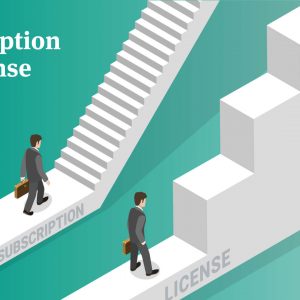What is SaaS Model Pricing (How it works, top models + more)
June 15, 2022

SaaS pricing models let customers pay for online apps and software on a monthly or annual basis. The target market, revenue targets, and marketing methods for a product or service are all influenced by the price notion.
Pricing a SaaS product appropriately might be a challenge which is why a pricing model is essential. It helps map out a path to net monthly revenues repeatedly. This article will look at different SaaS pricing models to help you pick the right one for your organization.
What is SaaS Model Pricing?
In the software as a service (SaaS) pricing model, clients pay a monthly or annual fee to access online applications/software. The pricing concept influences the product or service target market, revenue goals, and marketing strategies. If the price of a SaaS product is a deciding issue, then an appealing pricing strategy can help.
As a result, a well-priced SaaS benefits both customers and businesses. But, your pricing should be enough to satisfy your customers and incentivize them to keep their subscriptions active.
How SaaS Model Pricing Works
The pricing model of SaaS works on the principle of cost-to-value ratio. You only compete in the market if you choose a pricing plan that offers the best cost-to-value ratio. And this is what informs the pricing.
| SaaS Pricing Strategies | How it works |
| Pricing based on actual costs | Companies raise costs like product development and labor by a certain proportion to secure a return on their efforts when serving clients. |
| Price-competition | Competitor-based pricing compares prices to competitors. Your product is priced above, at, or below your competition |
| Infiltration pricing | You temporarily lower prices to boost demand within a certain time frame |
| Customer value pricing | Services pricing depend on how much value they deliver to customers. |
| Freemium pricing | This pricing offers a free, limited version of a SaaS product to promote sign-ups. |
SaaS Top Models
Once you price your SaaS, decide how to bill users with the following models.
Cost-of-use
A key benefit of this strategy is that its quoted pricing is less expensive than the actual monthly charges. You get the following:
- More customers
- More small businesses on the loop
Price per User Count
Customer charging premises on the number of users they have on their account. This package makes it simple for businesses and their customers to see what their monthly invoices would look like. So, it becomes easy to know who to levy which charges on.
Differentiated Costing
This offers a variety of packages with different features and prices. It is possible to tailor each tier to unique customer profiles, for example, single users versus medium-sized businesses. This model has the following advantages:
- Accurate and straightforward
- Can tailor services for different customers
Flat-Fee Costs
You only pay once and get everything — all customers have equal access to the same tools. With this strategy, it’s easier to attract new customers because there are no additional monthly fees.
This is by far the most straightforward method of calculating prices to date. There is a single subscription charge for SaaS, and the user is ready to go.
Conclusion
Both charging for value and selecting the correct audience are critical factors in determining the price of a SaaS product or service. It’s a win-win situation for you and your customers if you get a favorable pricing strategy.
FAQs
What are the major hurdles of SaaS pricing strategy?
Failure to comprehend the consumer and how the customer receives value is a major challenge. Secondly, failure to anticipate competition replies.
Which is the best SaaS subscription model?
Differentiated costing wins on all fronts.

